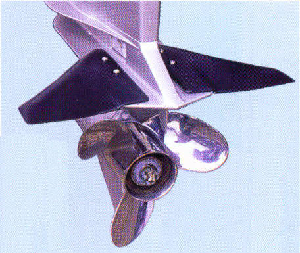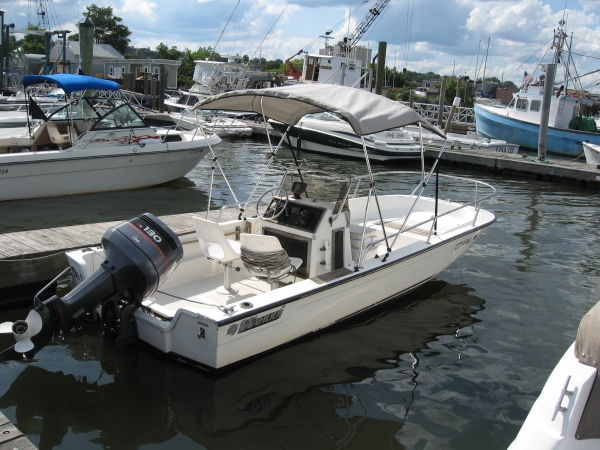







A site dedicated to discussion of these classic boats
25 Sep, 2012 2 Comments
Filed in: customization, parts
 Last year I replaced the ancient 1981 Evinrude 50 that came with my Wahoo! 16.2 with a more powerful and reliable 1995 3 cylinder Johnson 50. After the Evinrude, which was hard to start and tended to stall in idle, it was nice to have an engine that started first or second turn of the key every time. But even with the newer engine I still wasn’t happy with how long it took to get my Wahoo! up on a plane. It took too much throttle to get the nose down. And then once it did come down often the boat was going too fast for conditions (lotsa rocks in Boston Harbor).
Last year I replaced the ancient 1981 Evinrude 50 that came with my Wahoo! 16.2 with a more powerful and reliable 1995 3 cylinder Johnson 50. After the Evinrude, which was hard to start and tended to stall in idle, it was nice to have an engine that started first or second turn of the key every time. But even with the newer engine I still wasn’t happy with how long it took to get my Wahoo! up on a plane. It took too much throttle to get the nose down. And then once it did come down often the boat was going too fast for conditions (lotsa rocks in Boston Harbor).
So I wanted to be able to plane more quickly, with less throttle, and at lower speeds. And I wanted to do it without having to increase horsepower. Following the recommendation of a friend, this spring I looked into adding a hydrofoil to the engine. Researching online I found plenty of back and forth on message boards about the relative merits of hydrofoils.
The cons:
The pros:
And the qualified statements:
Shopping around I found quite a few makes/models to choose from, with prices ranging from $40 to $150. While most hydrofoils require drilling holes in the engine’s cavitation plate (so you can bolt it on), a few of the more expensive models advertised themselves as clamp on/no drilling required. That had some appeal until I read the customer reviews which were generally not favorable.
In the end I opted for Doel-fins, one of the earliest, simplest, and most affordable outboard hydrofoils. I didn’t even have to pay the $40 they cost since I was able to scavenge a set off a boat that that had washed ashore on a local beach and was abandoned by its owner. Installation was easy. It took less than half an hour and drilling holes in the cavitation plates was not the big deal I feared it might be.
Three months of boating later and the verdict is in: What a difference!!! I don’t have exact numbers but I would guess that with the Doel-fins my Wahoo! now achieves a plane at 40% less throttle than it took before. And it now planes at speeds as low as 10-12 mph. The ride and handling are smoother, with nice easy turns and a big reduction in porpoising. And my guess (though I don’t know for sure) is that with the faster planing I’m saving quite a bit of gas.
All in all, couldn’t be happier. ![]()
5 Sep, 2012 No Comments
Filed in: models and trim lines, shopping, wahoo! parts
 The question has come up more than once: “How do I choose the right size Bimini top for my Wahoo!?”
The question has come up more than once: “How do I choose the right size Bimini top for my Wahoo!?”
Well, it happens that iboats.net has a great online Bimini selection wizard that’ll guide you to the right size for your model, year, and trim line. Even if you choose to buy your Bimini somewhere else, it will at least give you the correct specs. You’ll find the wizard here.
One note: Different Wahoo!s came with different railing configurations. I’d bet my bippy that the Bimini selection wizard on iboats.net does not factor in your railing–likely it assumes there are no impediments as to where you can situate the Bimini’s mounting brackets. So make sure you measure and account for the presence of your railing when choosing a Bimini.
findre August 9, 2015
findre August 9, 2015
findre August 9, 2015
Lcolon7 June 23, 2015
MikeQ June 24, 2015